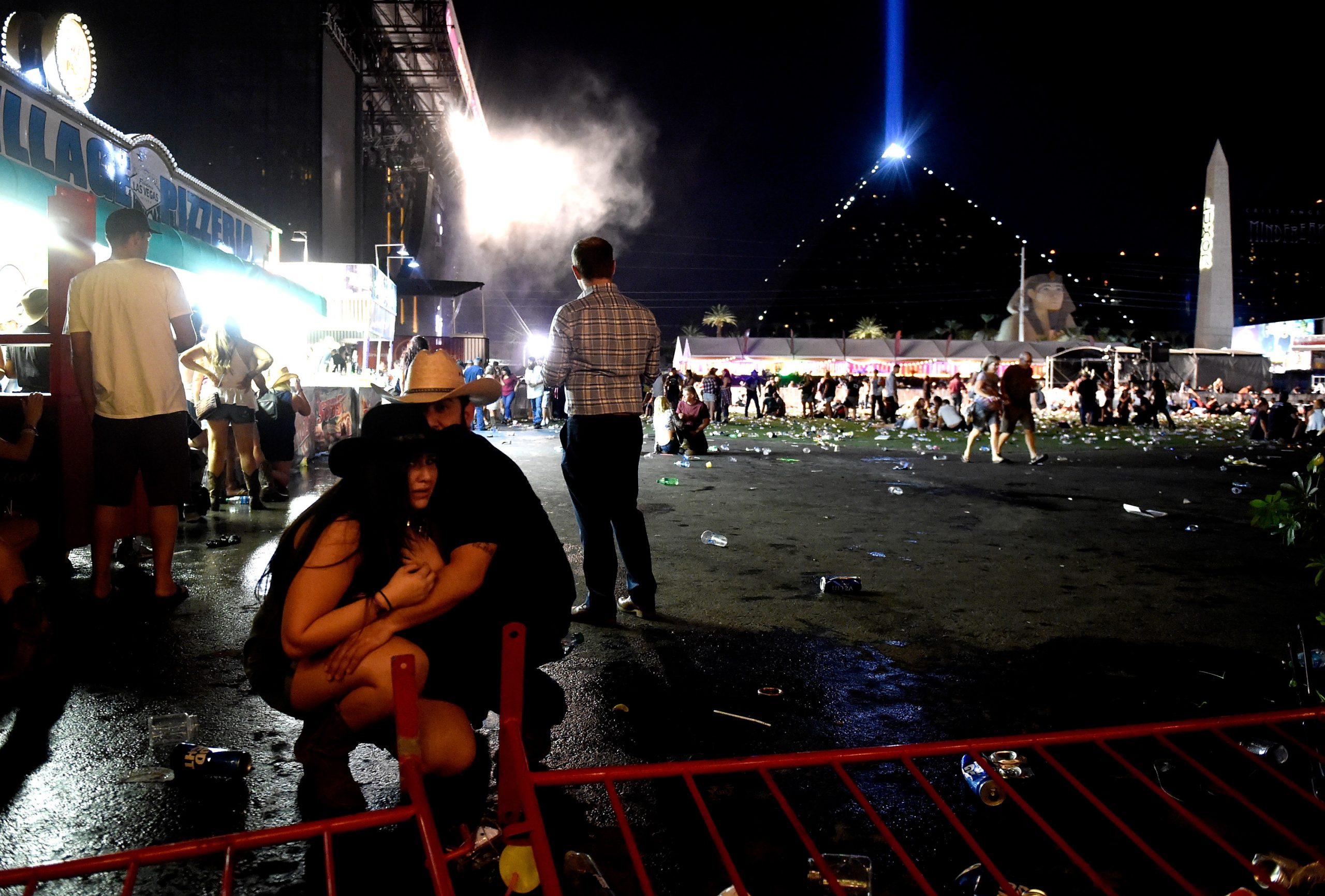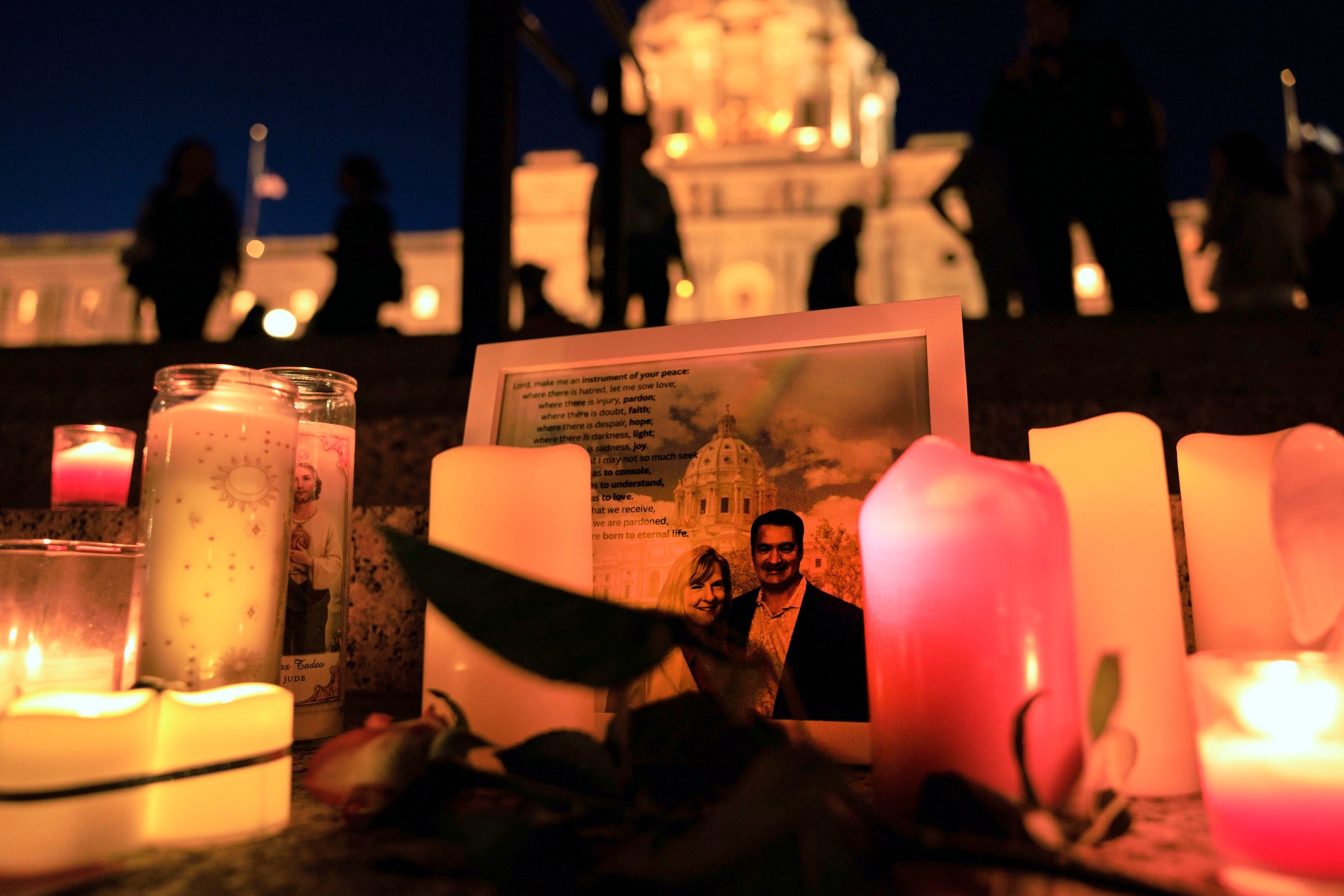What we know is that a lone gunman, armed with 19 rifles, some with automatic-fire capability, ambushed a crowd of concertgoers in Las Vegas from a hotel window. We know that the shooter destroyed lives, shattered families, orphaned children, and traumatized thousands. We know that the death and injury count is staggering: at least 59 dead and more than 500 injured.
We know that he is not a prohibited gun buyer. We know that his family was stunned by his actions, and that he has no known ties to terrorists.
But there are still vital questions that need answers: about the shooter, his actions, and the political fallout from the worst mass shooting on American soil.
How did the shooter get his hands on automatic weapons?
Police recovered as many as 19 rifles from the gunman’s hotel room on the 32nd floor of the Mandalay Bay Resort and Casino, according to multiple newspaper reports. Included in the arsenal was at least one automatic weapon.
Read Next

Mass Shooting on Las Vegas Strip Leaves More Than 50 Dead
Guns capable of fully automatic fire are rarely used in mass shootings. Since 1986, American gun makers have been prohibited from manufacturing civilian guns capable of firing automatically. The relatively few machine guns in circulation are held mostly by collectors, who pay up to tens of thousands of dollars for them.
Data from the Bureau of Alcohol, Tobacco, Firearms and Explosives show that 11,752 machine guns are registered in Nevada.
There are two scenarios for how the gunman likely obtained an automatic weapon:
- He bought one legally. Anybody with enough money and a clean background can purchase a machine gun in the United States. (You can find a handful for sale here.) Any machine gun purchased from a licensed gun dealer must be registered with the ATF.
- He purchased a weapon that had been converted to fully automatic, or did it himself. We’ve already detailed the world of barely legal devices designed to increase a semiautomatic gun’s rate of fire. But some gun owners decide to dip into the fully illegal world of converting their weapons to full auto. Converting popular rifles like the AR-15 or AK-47 requires some technical knowledge and access to a machine shop. If the gunman did indeed possess an automatic weapon that was not registered with the ATF, it would have to be an illegal conversation.
Update: The Associated Press is reporting that the gunman attached a bump fire stock to two of the weapons used in the attack. Bump fire stocks are legal devices designed to enable semiautomatic rifles to shoot at a higher rate of fire. Read our explainer on the devices here.
Did the suspected shooter display any red flags?
The shooter’s brother, Eric Paddock, said ”we have no idea how or why this happened,” and that he felt like “an asteroid fell on us.” He added that his brother was a high-stakes gambler who had no association with political, religious, or racial groups.
The Federal Bureau of Investigation said the shooter had no known links to terrorists.
So what provoked the 64-year-old to go on a lethal rampage?
Our two years of reporting on mass shootings and the people who commit those crimes suggest that the most common indicator of future violence isn’t connection with a radical ideology, but whether the person has a history of violent or threatening behavior to those around him.
Will the shooting put pressure on more hotels to screen patrons for guns?
Las Vegas casinos mostly prohibit guns on gambling floors and in hotel rooms, but few take measures to actually keep weapons out. Like many big resorts throughout the country, casinos typically have multiple entrances screened by little more than security staff’s eyes. None install metal detectors in any locations but nightclubs.
The hospitality industry in other countries has found that strengthening their facilities against attack can often come at the expense of guests’ experience and the bottom line. In 2008, India was shocked when a group of terrorists engaged in deadly 60-hour standoff in one of Mumbai’s most luxurious hotels. Afterward, many resorts and hotels beefed up security and installed metal detectors. Bookings cratered. As one executive said soon after that attack, “hospitality and security do not go together.”
When and how will the NRA respond?
After the 2012 shooting at Sandy Hook Elementary School, where 20 children and six educators were killed, the gun group made no public remarks for seven days. Then the NRA’s CEO Wayne LaPierre held a press conference, in which he gave a full-throated defense of his organization’s policies. He blamed the event on gun-free zones, which, he said, “tell every insane killer in America that schools are the safest place to inflict maximum mayhem with minimum risk.”
Last year, after 49 people were killed at the Pulse nightclub in Orlando, the NRA kept quiet for about 24 hours. At the time, the event marked the deadliest mass shooting in American history, and was carried out by a man who swore his allegiance to the Islamic State. As with Sandy Hook, the gun-rights group argued that gun restrictions would not have prevented the massacre.
“Radical Islamic terrorists are not deterred by gun-control laws,” Chris Cox, the NRA’s top lobbyist, wrote in an op-ed for USA Today.
What political response will Democrats coalesce around?
After the last worst-ever mass shooting, the June 2016 attack on the Pulse nightclub, Democrats in Congress held a sit-in to protest Republicans’ refusal to adopt legislation to close the so-called terror gap — a loophole in the background-check law that allows some people placed on the FBI’s no-fly list for suspicions of terrorism to still buy a gun.
Now the pressure will be on for Democrats to take up the gun issue again. They will have little chance of getting legislation passed through a Republican-dominated Congress or signed by a Republican president. Instead, they may have to focus on obstructing Republican-sponsored legislation endorsed by the National Rifle Association, like a bill to deregulate silencers, or another to create a national right to carry a concealed weapon.

